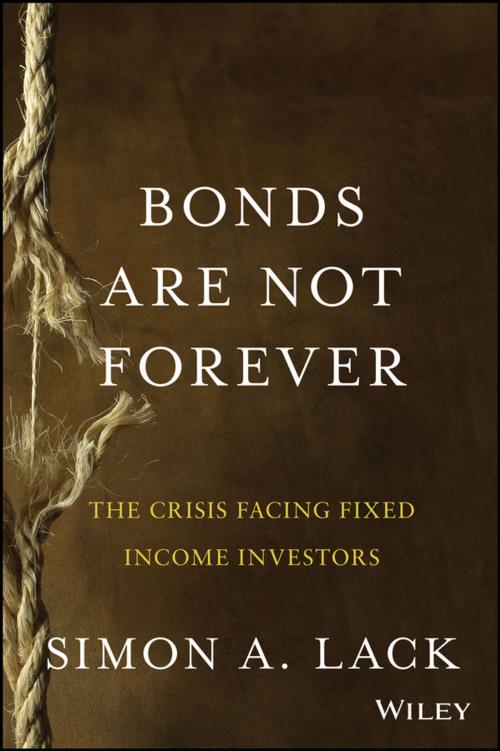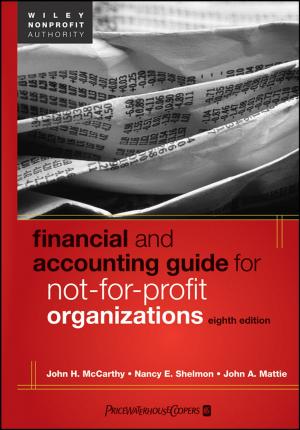Bonds Are Not Forever
The Crisis Facing Fixed Income Investors
Business & Finance, Finance & Investing, Finance| Author: | Simon A. Lack | ISBN: | 9781118659700 |
| Publisher: | Wiley | Publication: | August 6, 2013 |
| Imprint: | Wiley | Language: | English |
| Author: | Simon A. Lack |
| ISBN: | 9781118659700 |
| Publisher: | Wiley |
| Publication: | August 6, 2013 |
| Imprint: | Wiley |
| Language: | English |
An up-close look at the fixed income market and what lies ahead
Interweaving compelling, and often amusing, anecdotes from author Simon Lack's distinguished thirty-year career as a professional investor with hard economic data, this engaging book skillfully reveals why Bonds Are Not Forever. Along the way, it provides investors with a coherent framework for understanding the future of the fixed income markets and, more importantly, answering the question, "Where should I invest tomorrow?"
Bonds Are Not Forever chronicles the steady decline in interest rates from their peak in the 1980s and the concurrent drop in inflation during that period. Lack explains how those two factors spurred a dramatic growth in borrowing among both governments and individuals. Along the way, Lack describes how a financial industry meant to provide capital needed to drive productivity and economic growth became disconnected from Main Street and explores the grave economic, social, and political consequences of that disconnect.
- Provides practical solutions for avoiding the risk of falling bond markets and guaranteed negative real returns on savings
- Explains how the bursting of the real estate bubble in 2007–2008 led to massive borrowing by governments as they attempted to offset a sharp fall in economic activity
- Details how the trends of exploding debt and a financial sector that has grown much bigger than it needs to be have dramatically changed the game for savers
Offering a uniquely intimate, yet analytically thorough look at the coming fixed income crisis, Bonds Are Not Forever is must reading for investment professionals, as well as retail investors and their advisors.
An up-close look at the fixed income market and what lies ahead
Interweaving compelling, and often amusing, anecdotes from author Simon Lack's distinguished thirty-year career as a professional investor with hard economic data, this engaging book skillfully reveals why Bonds Are Not Forever. Along the way, it provides investors with a coherent framework for understanding the future of the fixed income markets and, more importantly, answering the question, "Where should I invest tomorrow?"
Bonds Are Not Forever chronicles the steady decline in interest rates from their peak in the 1980s and the concurrent drop in inflation during that period. Lack explains how those two factors spurred a dramatic growth in borrowing among both governments and individuals. Along the way, Lack describes how a financial industry meant to provide capital needed to drive productivity and economic growth became disconnected from Main Street and explores the grave economic, social, and political consequences of that disconnect.
- Provides practical solutions for avoiding the risk of falling bond markets and guaranteed negative real returns on savings
- Explains how the bursting of the real estate bubble in 2007–2008 led to massive borrowing by governments as they attempted to offset a sharp fall in economic activity
- Details how the trends of exploding debt and a financial sector that has grown much bigger than it needs to be have dramatically changed the game for savers
Offering a uniquely intimate, yet analytically thorough look at the coming fixed income crisis, Bonds Are Not Forever is must reading for investment professionals, as well as retail investors and their advisors.















